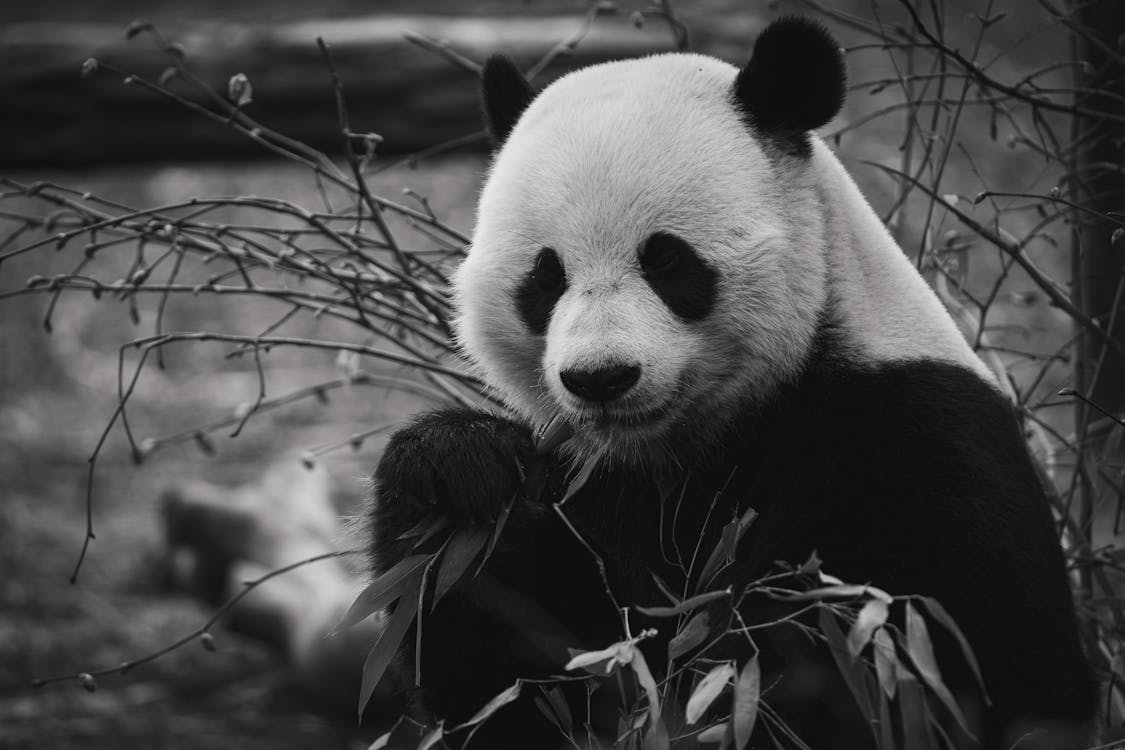Emotion in Every Frame: Animal Expressions Captured by Simone Cull Photography

Key Highlights
- Simone Cull’s photography captures the raw and profound emotion in wildlife, transcending traditional animal portraits.
- Her work uses emotional triggers and intricate details to create emotive, timeless images in black and white and vibrant colour.
- Each photograph tells a story, highlighting the intelligence, presence, and spirit of wild animals.
- Simone’s ethical practices focus on conservation, with 20% of her proceeds supporting wildlife protection efforts.
- Her mastery of lighting, timing, and composition evokes deep empathy and connection with the natural world.
Introduction
Have you ever seen a photograph and felt close to it right away? That is what Simone Cull's wildlife photography does. The way she takes photos brings out deep feelings. With her special style, Simone makes us see more than the beauty of animals. She helps us feel what these animals feel. You can see it in the strong look of a lioness or the gentle sadness in a gorilla. Her photos stay with you for a long time. The art she makes does not use words. The pictures form a quiet link between us and wild animals, shown in every shadow, pose, and shine in the eye.
Capturing Emotion in Animal Expressions: A Glimpse Through Simone Cull's Lens
Simone Cull is more than just a photographer. She is someone who tells stories about the wild. In her photos, you can see strong feelings shown in the eyes, gestures, and how her subjects hold themselves. Simone pays close attention to small details. This helps her show the mind and spirit of animals, making stories that last.
She uses light and shadow to make every photo feel deep and close. It does not matter if the picture is black-and-white or full of colour. Each one lets you step into the natural world. You can see true and honest stories in every single shot — the hallmark of Simone Cull photography.
The Power of a Look: Eyes as the Window to the Animal Soul
A single look can show a world of feeling. For Simone Cull, the eyes of the animals she photographs are the window to who they are inside. Simone does not see eyes as simple body parts. To her, they carry powerful stories of living through hard times, of being free, and of making bonds. When Simone takes photos, she uses her skill with close-ups and framing to make sure the animals’ eyes are what you see first.
When you see a gorilla with a thoughtful look or a lioness whose eyes show a fierce roar, you feel it right away. The emotion stands out, and you cannot miss it. Simone uses her special way, a bit like doing a check for emotions, so viewers can pick up on the mix of smarts and feelings animals show. She pays close attention to the textures and the light around the animals’ eyes. This keeps the focus on the eyes, which often show the most feeling.
She adds these small but important details to her photos and, because of this, Simone’s work stands out from others. Her pictures do more than show how animals look. They show what these animals feel. Her style draws you in and lets everyone who looks at her photos feel part of the animal's story.
Still Moments, Loud Stories: Expressions in Motionless Frames
Sometimes, being quiet says the most. Simone Cull has a way of keeping short moments still so that they speak with strong stories. She takes photos of animals as they stop, showing a clear difference between their calm bodies and the lively feelings they have inside.
- A baboon standing in the mist shows how someone can stay strong even when things are hard to see.
- The picture of a zebra caring for her baby shows how gentle mothers can be when they look after their young.
- A roaring lioness, caught in one still second, pulls you in because her power and beauty stand out.
Simone chooses to use black-and-white images. This makes the feelings in each picture easier to notice. There are no bright colours to take your eyes away. Her style brings out the main details, so you even see the thin lines in the elephant’s skin full of life. These simple, still photos help us remember that a lot happens in just one still moment.
From Joy to Melancholy: The Full Spectrum of Animal Feeling
Animals, just like people, can feel many things. Simone Cull shows this in her work in a very moving way. The camera she uses does more than just show a picture. It helps people feel for these creatures by sharing all the feelings they might have, like happy moments or times of quiet sadness.
In her work, Simone shows the openness and realness of wild animals. Picture a small cub sitting on the grass. You can see it looks at things with wonder. Now, think of a single elephant with a tired face. Its eyes seem full of life stories and even sadness. Simone brings out these feelings in every photo. She gives us art that has a story too. Each picture shows how deep animal emotions can go.
Simone’s photos help people see that animals are living beings who also have feelings. Her work does not just look nice. It asks you to stop and think. Through her photos, she wants every viewer to consider what they can do to help save the animals and the world they share with us.
The Art and Technique Behind the Emotion
Making emotion-driven photography does not just happen. It is a skill that grows with time, practice, and a deep tie to nature. Simone Cull uses what she knows about how animals act and waits for the right moment. She also pays attention to the way light, timing, and the setting are.
She works with these tools to bring out feelings in her pictures. Each photo from her is full of empathy. She can tell what mood an animal or scene has and shows that in what you see. She can tell a big story in her pictures without any words. Because of this, her work is not just great to look at. It also makes you feel something deep inside.
Timing is Everything: Patience and Precision in the Wild
Wildlife photography is not just about skill. It needs patience and timing, and Simone Cull has lots of both. In nature, animals cannot be told what to do. You must be ready and able to watch closely. You have to understand how nature moves and changes over time.
Simone watches for a long time and studies how long things have been happening. This helps her get ready for the moment that shows the perfect feeling. If there is a lion jumping or a giraffe moving softly, she can catch that quick second with great accuracy. For her, time is much more than something that passes. Time is one of her most important tools.
Because Simone respects that the wild is never fully in control, her photos look real. With a lot of patience, she waits and watches how the animals act until everything lines up just right. Then she takes the picture. Every image seems both natural and timeless. This attention and care give her photos their strong, emotional impact.
Natural Light, Natural Feelings: Mastering Mood with Lighting
Lighting can change a photo from a simple picture into a work of art. For Simone Cull, light is very important for creating feelings in her work. She always uses natural light. By doing this, she captures scenes in a way that studio lights just can't match.
The way shadows fall can add new meaning to a photo. For example, when soft sunlight comes through mist, it makes a baboon's outline look more mysterious. These tricks use the way we pick up moods in pictures, so you get drawn in. The way Simone watches the sunlight often decides if a photo feels sad, happy, or thoughtful.
She also takes her photos in a way that is good for her subjects. This means she does not bother them, and the natural light only makes them stand out more. Because of this, the photos make people feel close to what they see. The pictures look real, but more than that, they feel real too.
Composition That Speaks: Framing for Emotional Impact
A good photo can change the way people see the world. Simone Cull uses the idea of composition in a way that makes her photos tell strong stories. For her, framing a photo is not just about making things look even. It is about showing the viewer where to look and making them feel something.
She likes to zoom in on important parts, like a lion’s mane or the detailed stripes on a zebra. When she does this, Simone pulls out different layers of meaning. This is a lot like feature extraction, where the main goal is to get people to feel the most emotion.
Simone spends time planning how things will sit in the frame. Because of this, each photo asks people to come into its world. Space in a picture can make people think about being alone. Close shots of details show feelings between people or animals. Her choices in how to frame things help her photos stick with you, long after you stop looking at them.
Behind the Scenes with Simone Cull
The skill in Simone Cull's touching photos starts when she is out in the field. She trusts her gut and adjusts to what is going on around her. These things are important for what she does. Taking photos is not just pressing a button for her. She tries to understand what animals do, and she always acts in a good and careful way.
She goes to many places, from the open grasslands to animal shelters. Each one makes her feel something and changes how she sees things. Simone spends time where her animal subjects live so she can get to know them. This helps her take photos that look real and not put on. Because of these times and places, people can see that she forms a real bond with what she photographs. This real feeling shows up in all of her work.
From Savannahs to Shelters: Locations that Inspire
Simone's journeys take her from the wide, golden savannahs brimming with life to the quiet corners of local animal shelters. Each location serves as a canvas where the stories of her subjects unfold, inviting viewers to immerse themselves in each frame. In the vast expanses of the savannah, she captures moments of raw beauty—grazing elephants under an endless sky or a cheetah poised for its next move—each click echoing the heartbeat of nature. Here, she feels the pulse of the wild, and this energy infuses her work with vibrancy.
Connecting with the Subject: Trust, Respect, and Intuition
Building a true bond with the subject starts with trust, respect, and using your gut feeling. When you engage with wildlife, you need to do more than just watch. You have to get to know how the animal acts. This is what helps you take photos that show feeling and are real. The more a photographer pays attention to these small details, the better they can show raw emotion and truth.
Your natural feeling, or instinct, plays a big part in this. It helps you take photos that touch people on a deep level. This link can lead to great storytelling, making people feel closer to what the animal is going through. Also, if you give the animal enough space, it will act normally. This way, you can see and capture its real mood.
Taking care to act with respect not only makes your photos better, but it can also help show others the deeper message in every shot you take.
The Challenges of Ethical Wildlife Photography
When you do ethical wildlife photography, there can be many challenges. One big challenge is making sure you don’t harm the animals while still trying to take a good picture. You need to have respect for the animals and try to understand them. You must think about the effect you have on nature, not just how your photos will look.
There are also practical problems. You need to find places where the animals feel safe and do not get scared. Being able to see how animals feel and using your instincts is important. The best photos often happen when the animals are calm and relaxed. To do this, a photographer must be both flexible and patient. It is important to never force anything so the animals stay safe. This approach not only makes your photos better, but also helps people see why it is important to take care of nature and wildlife.
The Impact of Emotion-Driven Animal Photography
Emotion-driven animal photography is more than just taking pictures. It helps people feel real connections to the animals they see. When these photos show true emotions on an animal's face, people not only get to see their unique character but also start to care more about them. This kind of photography makes us think about our bond with nature and other living things. It can also make people care more and take steps to help protect animals and the places where they live.
This style of photography is a strong way to help others learn about issues in nature. When viewers see the emotions of animals, they may feel moved to help save them. Photographers like Simone Cull use their work to inspire people. They help people see why it’s important to protect animals. Each photo does more than just freeze a moment; it calls for a change and helps people feel close to wildlife.
Shifting Perspectives: From Viewer to Advocate
Turning someone from a viewer into an active supporter is an important journey. Often, it starts when people see strong, moving pictures. These photos can make people feel things and help them connect with the wild animals shown. When viewers feel this connection, they may start to care more and think about what wildlife conservation means.
When people read and see stories that are touching, they can begin to see how all things in nature work together. After this, they may see their place in the natural world. It can then lead them to do something, to get involved with groups or causes that work for wildlife. Over time, this new outlook can move people from simple respect for animals to real action that helps protect them. This shows how good photos can inspire people to care for our world. The message in each image is not just a goal, but something we can all work toward together.
Conservation Through Connection: Emotions as a Catalyst
The emotional connection people have with animals can be a strong driver for conservation. When we build this bond through real interactions and clear stories using pictures, people start to see why saving wildlife matters. Good images can make us feel for other creatures. These feelings can lead us to think again about how we take care of this planet. When people feel this way, they do not just understand—they want to help. So, they stop being just viewers and start helping to protect wildlife.
Good photography acts like a link. It helps people feel responsible for animals and for caring about the earth. When a photo shows us the little things in the way an animal looks or moves, it tells a story from the heart. This reminds us that all living things are connected. This strong feeling can help many of us to keep working for wildlife, which can make a real change that lasts.
Art as Awareness: Exhibits, Prints, and Public Engagement
Creative media like photography are powerful tools to help raise awareness about important conservation issues. Exhibits that feature Simone Cull’s work do more than just show animal faces. They bring out feelings in people and make them think about their own connection with nature. Each photo shows small details and emotions. These help people understand the deeper stories behind the animals.
Public engagement events, like workshops and talks, help spread this message even more. When people talk about these moving images, they often become supporters of wildlife, and their view on the world grows. Through these kinds of art, the strong feelings in the photos spark interest and care for conservation. These photos turn viewers into important members of the story of our planet and its many forms of life.
Conclusion
In the end, Simone Cull’s photography transcends mere visuals; it becomes a catalyst for change. Each framed moment captures not just the beauty of wildlife but also compels us to confront our responsibilities toward the earth and its inhabitants. As viewers transform into advocates, they realise that their actions can resonate far beyond the gallery walls. Through thoughtful exhibits and engaging workshops, her work fosters a community bonded by a shared mission: to protect and celebrate our planet's biodiversity. The narratives woven into each photograph ignite passion and inspire commitment, creating ripples of awareness that extend into everyday choices.
Frequently Asked Questions
How long does it take to capture the perfect emotional shot?
Getting the perfect emotional shot can take a lot of time. It may take hours or sometimes even days. You have to watch the animal closely for a long time. You also need to be patient and learn how the animals act in their home. You should make the animals feel safe so they trust you. This way, you can catch special moments that show real feelings and bonds in your wildlife photography.
How does Simone Cull evoke emotion in animal portraits?
Simone Cull takes photos that show true feelings in animal portraits. She gets this by spending time, being patient, and earning the animal’s trust and respect. With careful watching, she lets their real faces and moods come out. This way, her photos build a close bond between the animals and people who see them. Simone’s work helps others care about wildlife and support conservation.
Is there a specific message behind her emotional animal photography?
Simone Cull takes photos that show the strong link between people and wild animals. With her camera, she wants people to see and care about problems with keeping animals safe. She hopes you feel for these animals and want to help protect them. Her photos help all of us see and value nature more.








